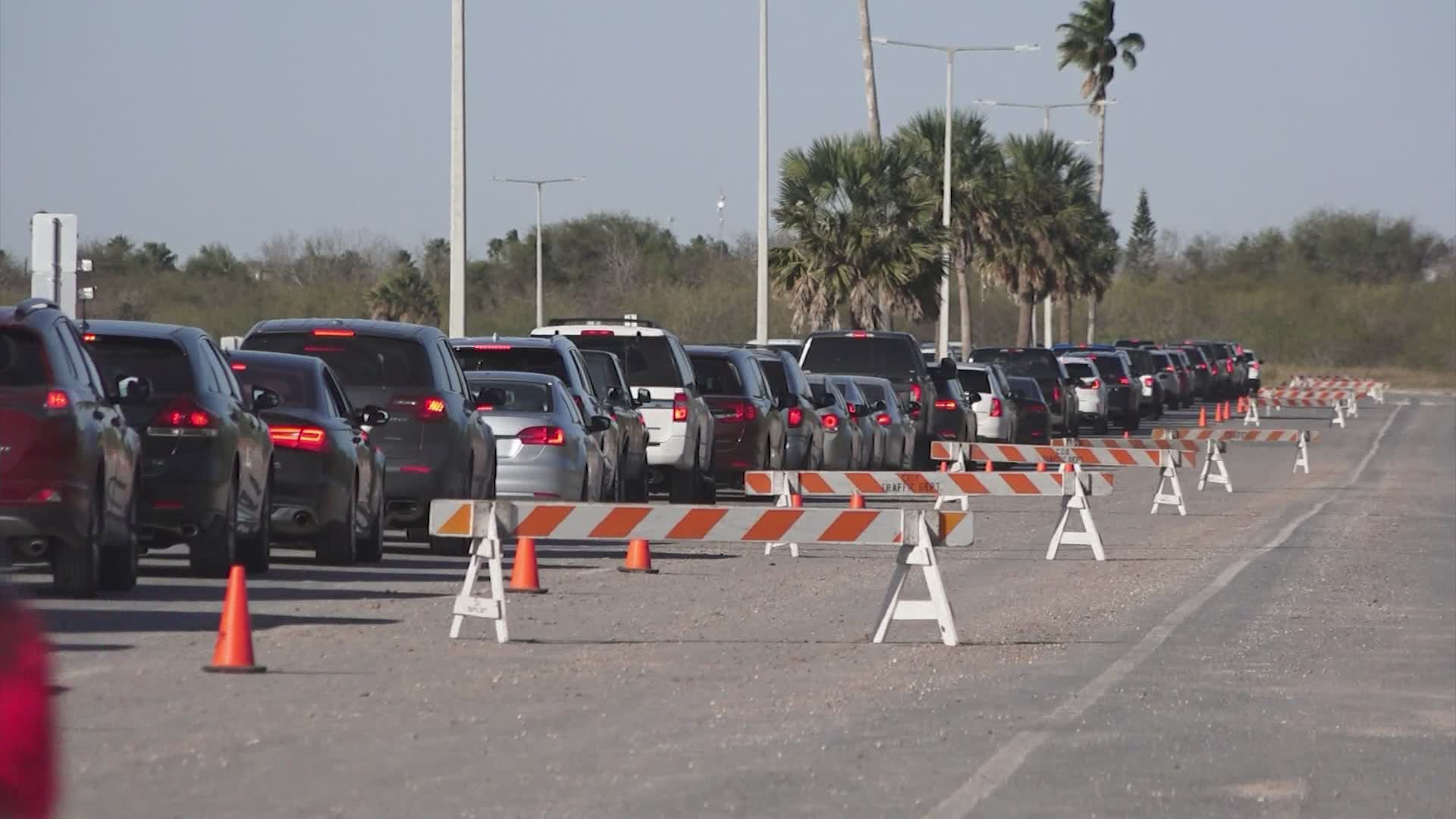BROWNSVILLE, Texas — The scene looks familiar: dozens of cars lined up in rows, cones marking the path, people directing traffic. It’s what COVID-19 testing used to look like when the pandemic first began, the pandemic Cameron County Public Health Administrator Esmeralda Guajardo didn’t see coming.
“I still remember to this day, I was sitting at the Cameron County Commissioners Court, and the director asked me if I thought this has become a pandemic,” Guajardo said. “And my answer was ‘no.’ I really believed that system was set up to be able to address it very quickly. You know, we got the Ebola, we got the Zika. And I thought, you know, how can this completely get that completely out of hand? And very quickly, we learned that there are so many factors to public health.”
The lessons haven’t stopped.
“Each time that we do that (a vaccination clinic), we do we take some lessons learned from it, and we just try to improve it,” Guajardo said.
What does it take to vaccinate hundreds or a couple of thousand people at one time? How do you communicate a clinic is coming when a person doesn’t do social media or internet?
How do you plan vaccinations around a multitude of unknowns?
“I believe the expected amount might be 6,000 (doses),” Guajardo said of next week. “We don't know when we're going to receive the vaccine exactly. But as soon as we do, we get with the municipalities, and we try to plan, put out an action plan on how we're going to do this and where.”
Several factors go into picking a place to hold a vaccination clinic, Guajardo said. It has to have ample parking, not only for people waiting for the vaccine, but for those who have to wait in their cars after they get the shot, to make sure they’re OK. Organizers have to take weather into consideration; an outside clinic is difficult when it’s windy. The location also has to have internet, so the doses can be entered into the state database in real time.
But what organizers have found so far is people are willing to wait, some as long as 7 hours, like Nurith Galonsky Pizana’s parents.
“It actually was my mother who insisted that we go,” said Galonsky Pizana, a Brownsville city commissioner. “I feel like a weight has been lifted from them. They seem really chipper. They're excited that they haven't felt any of the side effects. It gives you that peace of mind. There's no price for that, you know, for that peace of mind.”
That peace of mind is worth every sleepless night for Guajardo.
“The vaccine, what it represents is for a lot of people, a sense of, you know, of hope,” she said. “And that's the best reward you can get from all this work.”
Guajardo is realistic. The lines aren’t going to get shorter anytime soon.
And while inoculating a couple thousand people at a time is difficult, it’s exactly the problem Guajardo wants to have.
“My biggest challenge, is it handling 6,000 vaccines at a time, or give me 400,000 at one point, and easily I'll take the 400,000 at one point, because that’s a good problem to have,” she said.
According to the Texas Department of State Health Services, 959,419 Texans have received at least one dose of the vaccine. Texas is estimated to have 29 million residents.

